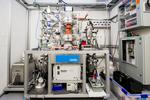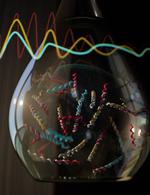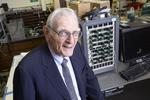Other
“The need for faster and smaller electronics has resulted in microelectronic components that produce progressively more heat. Thus, heat dissipation is an important issue, and one solution for cooling is to develop novel semiconducting materials with high thermal conductivity. Engineers …

“Generating power from the sun isn’t the problem. The technology has been there for decades. Storing that power efficiently, however, has been a challenge. Until now. Generating power from the sun isn’t the problem. The technology has been …

“Stampede1 helps researchers elucidate the chemistry of renewable acrylonitrile production From cars and bicycles to airplanes and space shuttles, manufacturers around the world are trying to make these vehicles lighter, which helps lower fuel use and lessen the environmental footprint …

“DNA molecules that follow specific instructions could offer more precise molecular control of synthetic chemical systems, a discovery that opens the door for engineers to create molecular machines with new and complex behaviors. Researchers have created chemical amplifiers and a …

“A team of researchers from the University of California, Berkeley, the University of California, Davis and the Texas Advanced Computing Center (TACC) published the results of an effort to harness the power of supercomputers to train a deep neural network …

“A team of engineers led by 94-year-old John Goodenough, professor in the Cockrell School of Engineering at The University of Texas at Austin and co-inventor of the lithium-ion battery, has developed the first all-solid-state battery cells that could lead to …

“A military drone flying on a reconnaissance mission is captured behind enemy lines, setting into motion a team of engineers who need to remotely delete sensitive information carried on the drone’s chips. Because the chips are optical and not …

“With an eye to the next generation of tech gadgetry, a team of physicists at The University of Texas at Austin has had the first-ever glimpse into what happens inside an atomically thin semiconductor device. In doing so, they discovered …

“With an advance that one cryptography expert called a “masterpiece,” University of Texas at Austin computer scientists have developed a new method for producing truly random numbers, a breakthrough that could be used to encrypt data, make electronic voting more …
